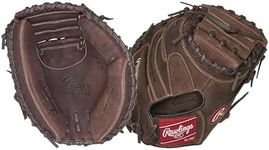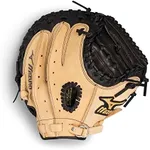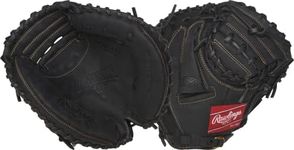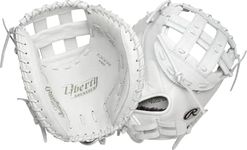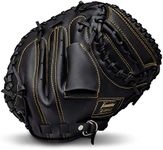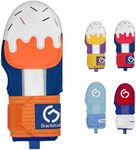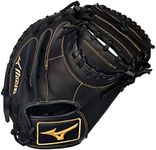Buying Guide for the Best Catchers' Gloves
Choosing the right catcher's glove is crucial for any baseball or softball player who plays the position. The glove not only needs to fit well but also needs to provide the right balance of protection, flexibility, and durability. Understanding the key specifications of catcher's gloves will help you make an informed decision and find the best fit for your needs.SizeThe size of a catcher's glove is measured in inches and typically ranges from 32 to 34 inches. This measurement refers to the circumference of the glove. A larger glove provides a bigger target for pitchers and can help catch more balls, while a smaller glove offers more control and quicker ball transfer. For younger players or those with smaller hands, a glove on the smaller end of the range is usually more appropriate. For adult players or those who prioritize a larger catching area, a glove on the larger end is better.
WebbingThe webbing of a catcher's glove is the part that connects the thumb to the fingers and helps secure the ball. There are different types of webbing, such as closed web and half-moon web. Closed webbing provides more support and is better for catching fast pitches, while half-moon webbing offers more flexibility and visibility. Your choice should depend on your playing style and preference for visibility versus support.
MaterialCatcher's gloves are typically made from leather, which can vary in quality. Full-grain leather is the highest quality and offers the best durability and performance, but it requires a longer break-in period. Synthetic leather is more affordable and easier to break in but may not last as long. Choose full-grain leather if you play frequently and need a glove that will withstand heavy use. If you play less often or are looking for a more budget-friendly option, synthetic leather might be the way to go.
PaddingPadding in a catcher's glove is essential for protecting your hand from the impact of fast pitches. More padding can provide better protection but may also make the glove heavier and less flexible. Less padding offers more flexibility and a lighter glove but may not protect as well. Consider how much protection you need based on the level of play and the speed of pitches you typically catch. Younger players or those in lower leagues might need less padding, while advanced players catching faster pitches will benefit from more padding.
Break-in TimeBreak-in time refers to how long it takes for a glove to become flexible and comfortable to use. High-quality leather gloves usually require a longer break-in period but offer better performance and durability once broken in. Synthetic gloves break in quickly but may not last as long. If you need a glove ready to use immediately, look for one with a shorter break-in time. If you can invest the time to break in a glove, a higher-quality leather option will serve you better in the long run.
FitThe fit of a catcher's glove is crucial for comfort and performance. A glove that is too tight can be uncomfortable and restrict movement, while one that is too loose can be difficult to control. Many gloves come in different sizes for youth, intermediate, and adult players. Make sure to try on different gloves to find one that fits snugly but comfortably on your hand. The right fit will allow you to perform at your best and reduce the risk of injury.
